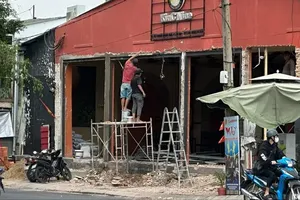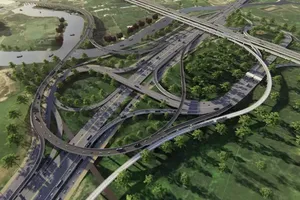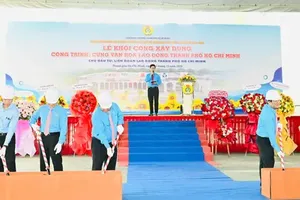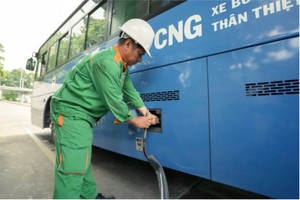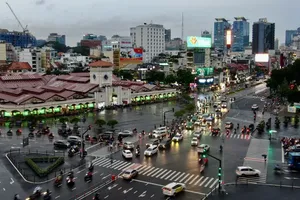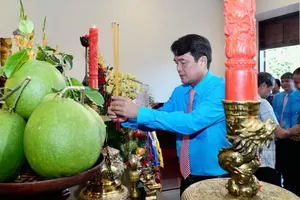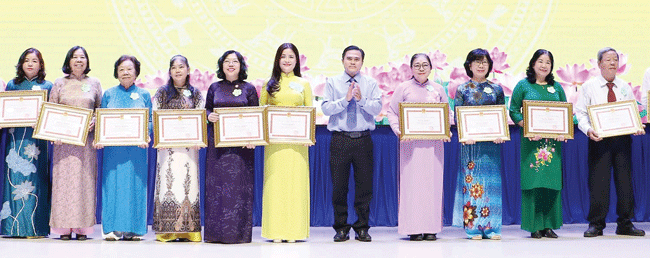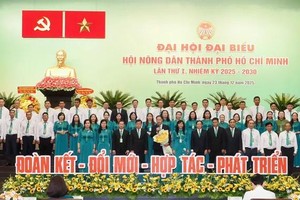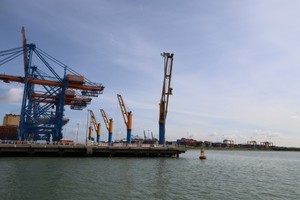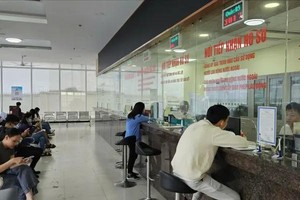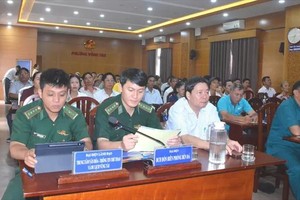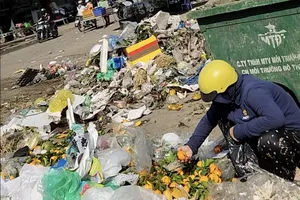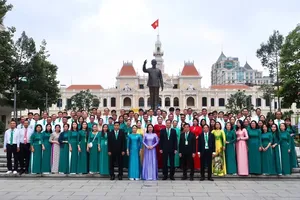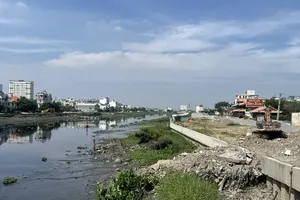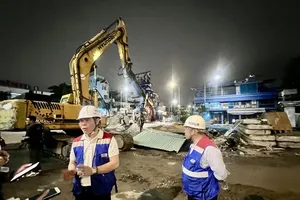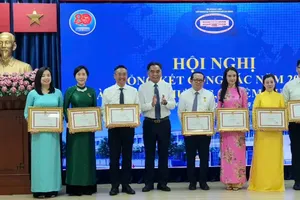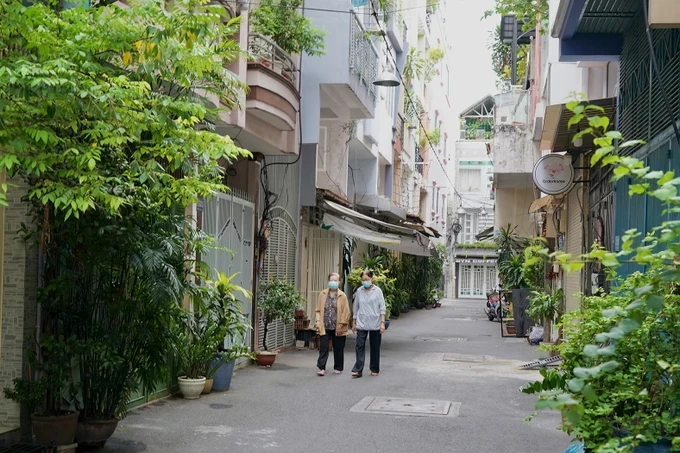
The cultivation of green spaces along rural roads has contributed significantly to increased tree cover, reduced soil erosion, and enhanced the aesthetic appeal of rural landscapes, particularly in districts such as Cu Chi and Hoc Mon.
To Thi Kim Loan from Nhi Binh Commune of Hoc Mon District shared that each morning at 6:00 a.m. she begins her task of tending to her flower garden in front of her house. Even in hot weather, this green space has provided necessary coolness and tranquility to the neighborhood.
As a member of the Hoc Mon District Women's Union, Loan actively participates in community initiatives aimed at creating greener and cleaner neighborhoods. She has been instrumental in spreading awareness about the importance of urban greening.
Sharing the same mind is Nguyen Thuy Linh, Vice Chairwoman of the Hoc Mon District Women’s Union. She frequently helps in the union’s organization of expanding green spaces and reducing pollution in the district. Since 2021, the Hoc Mon District Women's Union has successfully maintained 23 aesthetically pleasing streets lined with trees and flowers. Additionally, they have transformed five wastelands into parks and encouraged members to cultivate 8,800 potted plants.
In HCMC’s alleys, residents have creatively utilized small spaces to establish community gardens. For instance, on Nguyen Thi Minh Khai Street (Pham Ngu Lao Ward of District 1), residents have transformed their alley into a verdant oasis by planting a variety of trees, flowers, and vines.
Local authorities and districts have been actively developing parks to increase green spaces as well. Notable examples include Hoc Mon Eco-tourism Park (6.14ha), Vinh Loc Park (5.8ha) in Binh Tan District, and Saigon River Park (20ha) in Thu Duc City.
To meet the standards of a special-class city, HCMC aims to achieve a green coverage rate of 12-15 square meters per person, higher than the rate of 2.5-12 square meters per person cited in Decision No.24/QD-TTg (issued on January 6, 2010 by the Prime Minister). However, according to Dr. Dinh Quang Diep, an urban forestry expert from Nong Lam University, the city is falling short of its target due to slow progress. The city does need to have another 150ha of public park and 10ha of communal space as well as growing or nurturing 30,000 urban trees.
He recommends a systematic approach to urban greening, including the removal of unsuitable tree species and the preservation of valuable native trees with the ultimate goal to improve the natural environment while ensuring safety of street users. He also emphasizes the need to develop green spaces in suburban areas and encourage community involvement in urban gardening.
According to environmental experts, given the current shortage of public green spaces, Ho Chi Minh City should focus on developing more communal green areas in suburban regions.
Concurrently, there is a need to construct green spaces, vertical gardens, rooftop gardens, and terrace gardens, while encouraging residents to actively plant trees in their living spaces. The municipal authorities should establish a more comprehensive plan for green space development, strictly adhering to regulations regarding green space targets and ratios.
As outlined in Decision No. 117/QD-BHTDT issued by the HCMC Urban Infrastructure Construction Investment Project Management Board regarding the development plan for urban parks, the city aims to develop at least 68ha of public parks and 4ha of communal green spaces between 2024 and 2025. Additionally, they plan to plant and rehabilitate 12,000 trees.
Between 2026 and 2030, the focus will be on investing in large-scale parks in Thu Duc City, District 12, Cu Chi District, and Hoc Mon District.

